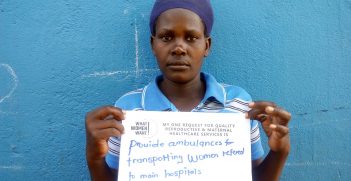Islamist Cyber-Radicalisation in Bangladesh During COVID-19

Bangladesh has seen a surge in Islamic radicalisation in the COVID-19 period as more terrorist organisations take to the internet to propagate their cause. Surprisingly, it is the urban, educated youths that are most drawn to militancy.
Though radical Islamism is characterised by a critical perspective on modernism and liberalism, extremist groups have embraced modern technology to spread their message. They call it “online jihad.” Looking at the history of Islamist radicalisation, this is not a novel phenomenon.
At the beginning of 21st century, Osama Bin Laden understood the importance of media. In 2002, he stated, “It is obvious that the media war in this century is one of the strongest methods; in fact, its ratio may reach 90 percent of the total preparation for the battles.” Bin Laden is said to have maintained connections with the Al-Jazeera television network and later sent tapes to the channel. Later the internet allowed al-Qaeda to open social media accounts and chat rooms to communicate their messages with masses. Bin Laden’s deputy, Ayman Al Zawahiri, added that, “More than half of this battle is taking place in the battlefield of the media. We are in a media battle in a race for the hearts and minds of our ummah.” Zawahiri further stated that, “We must get our message across to the masses of the nation and break the media siege imposed on the jihad movement. This is an independent battle that we must launch side by side with the military battle.” These statements illustrate how Islamist extremist groups have accepted online technologies to advance their agenda. They consider spreading their messages online as important as frontline battles because the ultimate aims are to project intimidation and recruit new members.
The exploitation of the internet by extremist groups resulted in 4,000 jihadi websites by 2005. Today, the al-Qaeda alone has over 4,000 jihadi sites. The University of Arizona’s dark web project estimates roughly 50,000 total sites, including all forms of extremist groups. The jihadist information ecosystem is a large and complex network which connects a vast array of platforms. Propaganda via the internet has become more professional since 2006. Jihadist content can be widely accessed through social media and the surface web, and also through dark networks and deep internet. Three radical Islamist media organizations, Al-Fajr, Global Islamic Media Front, and As-Sahab, have published a substantial flow of propagandist audio, video, and text messaging.
This global trend of internet usage by extremist groups can be seen in Bangladesh. A substantial number of online discussion groups centre on “defending Islam against Western aggression.” Facebook pages like “Struggle for Islam in Bangladesh,” “Daily Jihadi News Paper,” “Kafir and Jalim are Frightened,” “The Khilafat is Coming;” Twitter accounts run by the BD Jihadi Group, Islamic State Bangla, and Al-Qaeda; websites like “Jundullahsite,” “Bangladesh Jihadi Group,” and “Morocco to Indonesia;” and Youtube channels like “Jamaatul Mujahideen Bangladesh,” “Jumuarkhutbabd,” and “Ummah Network” have been infamous in provoking violent jihadi ideology among Bangladeshi youths. The Youtube channel Ummah Network, which was created in January 2016, has more than half a million subscribers and 43 million views. Even during this pandemic, they have been continuously publishing videos and documentaries on what needs to be done by Muslims, how to address COVID-19 problems, conspiracies of the West, Muslim victimisation, and most importantly, “female stories” on how women should maintain purdah (shielding themselves from men), how feminism is destroying women’s chastity, and on the lifestyle of the Prophet Mohammed’s wife and daughter. The main objective of this channel is to promote Islamic values among youths and to unite ummah (all Muslims). Through their online videos, they promote their version of Islam and how it conflicts with secular governments. Their subscribers and viewers have actually increased during the pandemic. Similarly, the journal Al Balagh has continued its publications and addresses the above-mentioned issues in Bengali. These online platforms have helped create a new wave of militancy in Bangladesh.
This new wave of militancy, characterised by the massive use of technology by militant organizations, is unique. Terrorist organisations are no longer dependent on traditional ways of preaching their ideology, such as going to mosques, madrassas, and schools to distribute leaflets. Now they can easily reach out to people with a simple click of the mouse. This has already had a serious impact as the major portion of recruitment is now done through the internet.
A survey conducted by the Bangladesh police on 250 extremists found that 82 percent of extremists were inspired by social media propaganda and 80 percent use Thrima, Wechat, Facebook Messenger, and other end-to-end encrypted apps for communication. Several recruiters for extremist groups, when interviewed, said that they posted radical materials on social media like, “Our Muslim brothers are getting killed in Myanmar, Jerusalem, Iraq and Syria; don’t we have anything to do?” They then followed who liked and shared these posts and engaged with those individuals with one-on-one communication. It was revealed that most of the followers of this new wave of militancy come from well-educated, urban backgrounds because they are the ones who have the greatest access to the Internet.
Online radicalisation has been a major challenge for Bangladesh since 2013, as militant organisations have utilized cyberspace to promote their ideologies. Now, COVID-19 has created the scope for terrorists to reach an even wider audience because the physical world has been turned into a virtual world. Firstly, recruiters will be able to reach out to more people than before, as many everyday activities have now been forced online. Almost all universities, including the most prominent university of Bangladesh, Dhaka University, have started online teaching. The massive increase in time online has left youths especially vulnerable to online radicalisation. Secondly and more importantly, COVID-19 is going to create grievances and frustration among young people, especially those who are educated. Unemployment, underemployment, income inequality, endemic corruption, and deprivation have been an integral part of the Bangladeshi society. Without a doubt, these vulnerabilities have been exacerbated by COVID-19. Opportunistic terrorist organisations will capitalize on every issue or failure. They will use this pandemic as well.
In Bangladesh, COVID-19 has already revealed the disparity in social structure in which the poor and middle classes have no place. They have been leaving cities due to their inability to cope with the cost of living in cities. The health sector has failed to ensure the availability of necessary health facilities and the government has failed to provide the basic needs for citizens, such as providing health and job security. Persistent social deterioration will aggravate young people even more and create the perfect conditions for terrorist organisations to recruit them.
Unemployment has been a persistent problem for Bangladesh, and this will be further accelerated by the COVID-19 pandemic. Moreover, a lack of recreational activities will leave young people frustrated and bored. Together. these will increase grievances in a post-COVID-19 Bangladesh. Bangladesh police has already raised a security alert about an impending terror attack by a militant group in July 2020. This alert shows that militant organisations remain active as the world has shut down.
The pandemic situation demands robust and nuanced policies from the government. On the one hand, counter-terrorism and countering violent extremism programs need to be strengthened. On the other, the Bangladeshi government needs to address issues of youth vulnerabilities.
Shafi Md Mostofa is an Assistant Professor of Religion and Culture at the University of Dhaka, and a doctoral fellow at the University of New England, Australia. His publications have appeared (or are forthcoming) with Routledge, Springer, Cambridge University Press, Palgrave Macmillan; and the journals: Perspectives on Terrorism, Counter-Terrorism and Terrorist Analyses, and Peace and Conflict Review.
This article is published under a Creative Commons Licence and may be republished with attribution.





